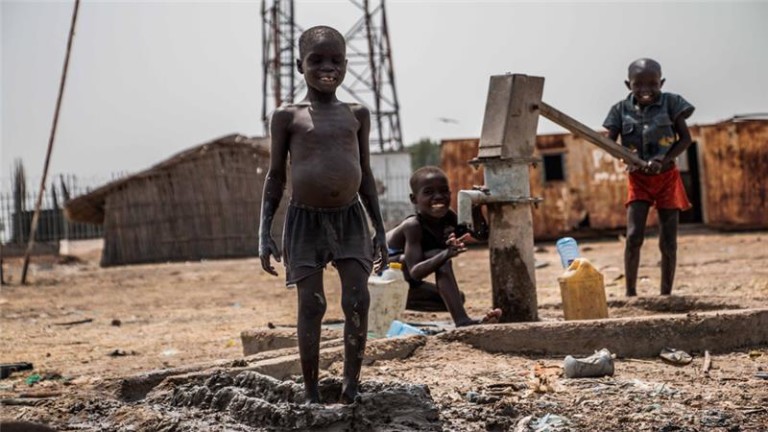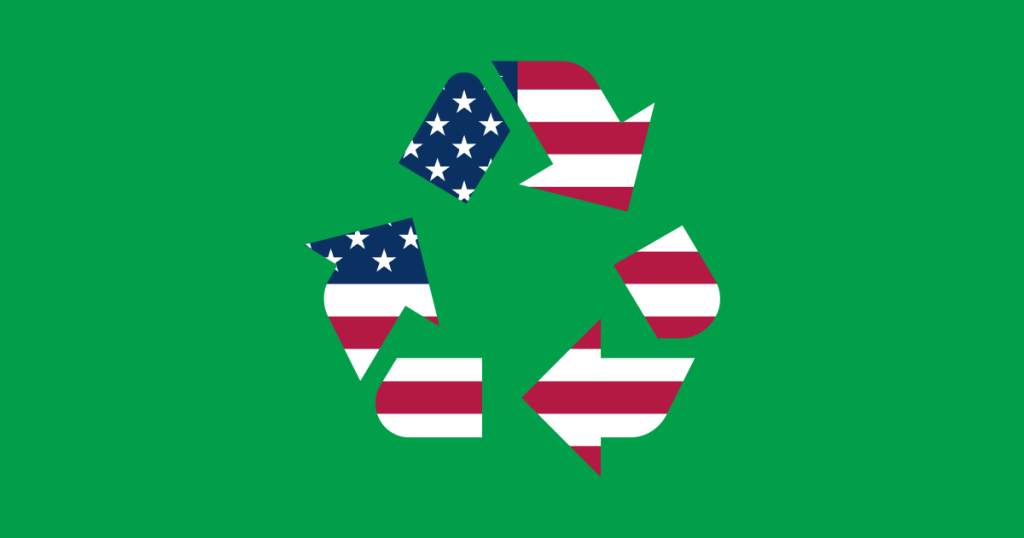Hidden dangers: Toxic chemicals found in children’s hair clips – EnviroNews Nigeria

Report on Hazardous Chemicals in Children’s Products and Implications for Sustainable Development Goals
1.0 Executive Summary
A recent investigation by the environmental watchdog group BAN Toxics has revealed the presence of hazardous levels of lead in children’s hair accessories sold in the Philippines. This finding presents a direct challenge to the achievement of several key Sustainable Development Goals (SDGs), most notably SDG 3 (Good Health and Well-being) and SDG 12 (Responsible Consumption and Production). The report highlights significant regulatory gaps and underscores the urgent need for stronger institutional frameworks, aligning with SDG 16 (Peace, Justice and Strong Institutions), to protect vulnerable populations from chemical hazards.
2.0 Findings on Chemical Contamination and Public Health
2.1 Market Surveillance and Analysis
In a market monitoring exercise, BAN Toxics procured 30 samples of children’s hair clips from various retailers. The key findings are as follows:
- All 30 samples tested positive for lead, with concentrations reaching as high as 1,830 parts per million (ppm).
- These levels significantly exceed the regulatory safety limits established for children’s products.
- The accessories were identified as being made from polyvinyl chloride (PVC), a synthetic plastic polymer associated with multiple health risks.
2.2 Health Risks and Violation of SDG 3: Good Health and Well-being
The presence of lead in products intended for children is a severe public health concern that directly undermines the objectives of SDG 3. According to the World Health Organization, lead is a potent neurotoxin with no known safe level of exposure for children. The health implications include:
- Permanent damage to the developing brain.
- Reduced intelligence quotient (IQ) and attention span.
- Impaired learning abilities and increased risk of behavioral problems.
The primary exposure pathway from hair clips is prolonged skin contact, allowing the chemical to leach and be absorbed. This situation is in direct conflict with SDG Target 3.9, which aims to substantially reduce the number of deaths and illnesses from hazardous chemicals and pollution.
3.0 Regulatory Deficiencies and the Imperative for SDG 16: Peace, Justice and Strong Institutions
3.1 Current Legislative Gaps
A significant finding is the lack of a comprehensive national law in the Philippines that ensures all children’s products are free from toxic substances. This regulatory vacuum allows for the circulation of hazardous goods in the market. This contrasts with actions in other jurisdictions, such as the U.S. Consumer Product Safety Commission’s recall of similar products due to lead poisoning hazards.
3.2 Call for Stronger Institutional Action
BAN Toxics advocates for government intervention to establish a robust legal framework, a goal aligned with SDG 16: Peace, Justice and Strong Institutions, which calls for effective and accountable institutions. The proposed measures to strengthen regulation include:
- Mandatory pre- and post-market product testing.
- More frequent inspections, particularly for imported items.
- Stricter penalties for violations.
- Enforcement of product labeling, chemical use transparency, and traceability standards.
Implementing such a law is critical for safeguarding children’s health and upholding their right to a safe environment.
4.0 Promoting SDG 12: Responsible Consumption and Production
4.1 Challenges to Sustainable Consumption Patterns
The widespread availability of inexpensive yet hazardous products challenges the principles of SDG 12: Responsible Consumption and Production. The production and sale of these items represent an unsustainable and irresponsible pattern that prioritizes low cost over consumer safety and environmental health. This practice fails to meet SDG Target 12.4, which calls for the environmentally sound management of chemicals throughout their life cycle.
4.2 Recommendations for Consumers and Stakeholders
To foster responsible consumption and mitigate exposure risks, BAN Toxics has issued a set of recommendations. By making informed choices, consumers can drive market demand for safer products and contribute to the goals of SDG 12.
- Seek out registered and notified children’s products that have received approval from the Food and Drug Administration (FDA).
- Choose hair accessories that explicitly meet safety standards and have been tested for toxic substances.
- Consider hair clips made from natural materials like wood, bamboo, or organic cotton fabric, which are less likely to contain synthetic chemicals.
- Purchase from established brands with proven safety records and transparent manufacturing practices.
- Opt for plain and less-colored accessories, as these are generally safer than those with multiple colors, metallic finishes, or elaborate decorations which may contain heavy metals.
Advocacy for stronger regulations combined with informed consumer choices is essential for creating a market where all children’s products are safe and free from toxic chemicals, thereby advancing multiple Sustainable Development Goals.
1. Which SDGs are addressed or connected to the issues highlighted in the article?
SDG 3: Good Health and Well-being
- The article directly addresses health risks, particularly for children. It highlights the presence of “brain damaging chemicals” like lead in hair clips, which can cause “reduced intelligence quotient (IQ) and attention span, impaired learning ability, and increased risk of behavioural problems,” directly linking to the goal of ensuring healthy lives.
SDG 12: Responsible Consumption and Production
- The article focuses on unsafe consumer products (“children’s hair clips sold in bargain shops”) and the need for safer production and consumption patterns. It calls for “safer alternatives,” “transparent manufacturing practices,” and for consumers to make “informed choices,” which are central themes of SDG 12.
SDG 16: Peace, Justice and Strong Institutions
- The article points to a failure of governance and regulation, stating that “the Philippines has yet to pass a law that ensures all children’s products in the market… are safe from toxic substances.” The call for “stronger regulation,” “more frequent inspections,” and “stricter penalties” relates to the development of effective, accountable, and transparent institutions.
2. What specific targets under those SDGs can be identified based on the article’s content?
SDG 3: Good Health and Well-being
- Target 3.9: By 2030, substantially reduce the number of deaths and illnesses from hazardous chemicals and air, water and soil pollution and contamination.
- The article’s core concern is illness caused by a hazardous chemical, lead. It explicitly mentions that lead exposure is “especially dangerous to a child’s developing brain” and can cause “adverse health issues,” aligning directly with the goal of reducing illness from chemical contamination.
SDG 12: Responsible Consumption and Production
- Target 12.4: By 2020, achieve the environmentally sound management of chemicals and all wastes throughout their life cycle… and significantly reduce their release to air, water and soil in order to minimize their adverse impacts on human health and the environment.
- The article discusses the need to manage the toxic chemical (lead) in consumer products (hair clips) to prevent its “adverse impacts on human health.” The call to prevent chemicals from leaching through “skin absorption” is a direct reference to managing chemicals to minimize human health impacts.
- Target 12.8: By 2030, ensure that people everywhere have the relevant information and awareness for sustainable development and lifestyles in harmony with nature.
- The article calls for “greater public awareness and caution when purchasing children’s items” and suggests consumers “look for registered and notified children’s products” and “purchase from established brands with good safety records.” This directly supports the target of ensuring people have the relevant information to make safe and sustainable choices.
SDG 16: Peace, Justice and Strong Institutions
- Target 16.b: Promote and enforce non-discriminatory laws and policies for sustainable development.
- The repeated call by BAN Toxics for the Philippine government “to prioritise the passage of a law on safe and non-hazardous children’s products” is a direct appeal for a new policy aimed at sustainable development, specifically protecting the health of a vulnerable group (children).
3. Are there any indicators mentioned or implied in the article that can be used to measure progress towards the identified targets?
Indicators for SDG 3 & 12
- Concentration of lead in consumer products: The article provides a specific, measurable indicator. The tested hair clips contained lead levels “reaching up to 1,830 parts per million (ppm).” Progress would be measured by the reduction of this concentration in products to below the “safe exposure limits for children.”
- Incidence of lead-related health problems in children: The article mentions health effects like “developmental delays, learning difficulties, and behavioral problems.” A reduction in the incidence of these conditions could serve as an indicator of progress, although it is not directly measured in the article.
Indicators for SDG 12 & 16
- Availability of product safety information: The article implies that progress can be measured by the enforcement of “product labeling and safety standards.” The presence and clarity of such labels on children’s products would be a key indicator.
- Existence of national legislation: A clear, binary indicator is the “passage of a law on safe and non-hazardous children’s products.” The existence of such a law is a primary measure of institutional response mentioned in the article.
- Regulatory enforcement actions: The article suggests measuring progress through “more frequent inspections especially for imported items, and stricter penalties for violations.” The number of inspections conducted and penalties issued would be a direct indicator of institutional effectiveness.
4. Table of SDGs, Targets, and Indicators
| SDGs | Targets | Indicators Identified in the Article |
|---|---|---|
| SDG 3: Good Health and Well-being | Target 3.9: Substantially reduce illnesses from hazardous chemicals and pollution. |
|
| SDG 12: Responsible Consumption and Production |
Target 12.4: Achieve the environmentally sound management of chemicals to minimize adverse impacts on human health.
Target 12.8: Ensure people have relevant information and awareness for sustainable development. |
|
| SDG 16: Peace, Justice and Strong Institutions | Target 16.b: Promote and enforce non-discriminatory laws and policies for sustainable development. |
|
Source: environewsnigeria.com

What is Your Reaction?
 Like
0
Like
0
 Dislike
0
Dislike
0
 Love
0
Love
0
 Funny
0
Funny
0
 Angry
0
Angry
0
 Sad
0
Sad
0
 Wow
0
Wow
0







































































